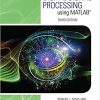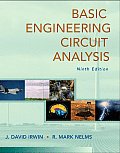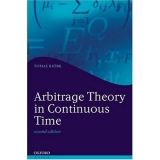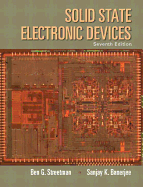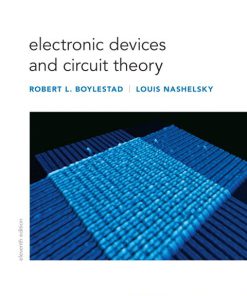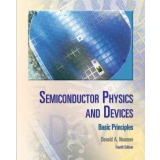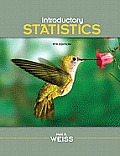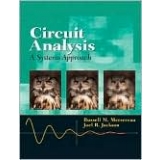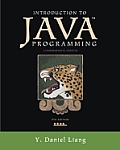Solutions Manual to accompany Electronic Devices and Circuit Theory 9th edition 9780131189058
$35.00 Original price was: $35.00.$26.50Current price is: $26.50.
Solutions Manual to accompany Electronic Devices and Circuit Theory 9th edition 9780131189058
This is completed downloadable of Solutions Manual to accompany Electronic Devices and Circuit Theory 9th edition 9780131189058
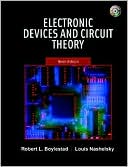
Product Details:
- ISBN-10 : 0131189050
- ISBN-13 : 978-0131189058
- Author: Robert L. Boylestad (Author), Louis Nashelsky (Author)
Highly accurate and thoroughly updated, this book has set the standard in electronic devices and circuit theory for over 25 years. Boylestad and Nashelsky offer readers a complete and comprehensive survey of electronics and circuits, focusing on all the essentials they will need to succeed on the job. This very readable book is supported by strong, helpful learning cues and content that is ideal for new workers in this rapidly changing field. Its colorful layout boasts a large number of stunning photographs. Topics covered include: semiconductor diodes, BJT devices, DC biasing, FET devices, Op-Amp applications, power amplifiers, linear-digital ICs, power supplies and voltage regulators, and other two-terminal devices. An excellent reference work for anyone involved with electronic devices and other circuitry applications, such as electrical and technical engineers.
Table contents
CHAPTER 1: Semiconductor Diodes 1 1.1 Introduction 1 1.2 Semiconductor Materials: Ge, Si, and GaAs 2 1.3 Covalent Bonding and Intrinsic Materials 3 1.4 Energy Levels 5 1.5 Extrinsic Materials: n-Type and p-Type 7 1.6 Semiconductor Diode 10 1.7 Ideal Versus Practical 19 1.8 Resistance Levels 21 1.9 Diode Equivalent Circuits 27 1.10 Transition and Diffusion Capacitance 30 1.11 Reverse Recovery Time 31 1.12 Diode Specification Sheets 32 1.13 Semiconductor Diode Notation 35 1.14 Diode Testing 36 1.15 Zener Diodes 38 1.16 Light-Emitting Diodes 41 1.17 Summary 48 1.18 Computer Analysis 49 CHAPTER 2: Diode Applications 59 2.1 Introduction 59 2.2 Load-Line Analysis 60 2.3 Series Diode Configurations 65 2.4 Parallel and Series-Parallel Configurations 71 2.5 AND/OR Gates 74 2.6 Sinusoidal Inputs; Half-Wave Rectification 76 2.7 Full-Wave Rectification 79 2.8 Clippers 82 2.9 Clampers 89 2.10 Zener Diodes 92 2.11 Voltage-Multiplier Circuits 100 2.12 Practical Applications 103 2.13 Summary 113 2.14 Computer Analysis 114 CHAPTER 3: Bipolar Junction Transistors 131 3.1 Introduction 131 3.2 Transistor Construction 132 3.3 Transistor Operation 132 3.4 Common-Base Configuration 134 3.5 Transistor Amplifying Action 138 3.6 Common-Emitter Configuration 139 3.7 Common-Collector Configuration 145 3.8 Limits of Operation 146 3.9 Transistor Specification Sheet 147 3.10 Transistor Testing 151 3.11 Transistor Casing and Terminal Identification 153 3.12 Summary 154 3.13 Computer Analysis 156 CHAPTER 4: DC Biasing-BJTs 161 4.1 Introduction 161 4.2 Operating Point 162 4.3 Fixed-Bias Circuit 164 4.4 Emitter Bias 171 4.5 Voltage-Divider Bias 175 4.6 DC Bias with Voltage Feedback 182 4.7 Miscellaneous Bias Configurations 185 4.8 Design Operations 190 4.9 Transistor Switching Networks 196 4.10 Troubleshooting Techniques 199 4.11 pnp Transistors 202 4.12 Bias Stabilization 203 4.13 Practical Applications 212 4.14 Summary 219 4.15 Computer Analysis 221 CHAPTER 5: BJT AC Analysis 236 5.1 Introduction 237 5.2 Application in the AC Domain 237 5.3 BJT Transistor Modeling 238 5.4 The re Transistor Model 240 5.5 The Hybrid Equivalent Model 247 5.6 Hybrid Model 252 5.7 Variations of Transistor Parameters 253 5.8 Common-Emitter Fixed-Bias Configuration 255 5.9 Voltage-Divider Bias 258 5.10 CE Emitter-Bias Configuration 261 5.11 Emitter-Follower Configuration 268 5.12 Common-Base Configuration 272 5.13 Collector Feedback Configuration 274 5.14 Collector DC Feedback Configuration 278 5.15 Determining the Current Gain 281 5.16 Effect of RL and Rs 282 5.17 Two-Port Systems Approach 287 5.18 Summary Tables 292 5.19 Cascaded Systems 295 5.20 Darlington Connection 299 5.21 Feedback Pair 304 5.22 Current Mirror Circuits 307 5.23 Current Source Circuits 309 5.24 Approximate Hybrid Equivalent Circuit 311 5.25 Complete Hybrid Equivalent Model 317 5.26 Troubleshooting 324 5.27 Practical Applications 325 5.28 Summary 332 5.29 Computer Analysis 334 CHAPTER 6: Field-Effect Transistors 360 6.1 Introduction 360 6.2 Construction and Characteristics of JFETs 362 6.3 Transfer Characteristics 368 6.4 Specification Sheets (JFETs) 374 6.5 Instrumentation 376 6.6 Important Relationships 377 6.7 Depletion-Type MOSFET 378 6.8 Enhancement-Type MOSFET 384 6.9 MOSFET Handling 391 6.10 VMOS 392 6.11 CMOS 393 6.12 MESFETs 394 6.13 Summary Table 397 6.14 Summary 397 6.15 Computer Analysis 398 CHAPTER 7: FET Biasing 404 7.1 Introduction 404 7.2 Fixed-Bias Configuration 405 7.3 Self-Bias Configuration 409 7.4 Voltage-Divider Biasing 415 7.5 Depletion-Type MOSFETs 420 7.6 Enhancement-Type MOSFETs 425 7.7 Summary Table 430 7.8 Combination Networks 430 7.9 Design 434 7.10 Troubleshooting 436 7.11 p-Channel FETs 437 7.12 Universal JFET Bias Curve 439 7.13 Practical Applications 442 7.14 Summary 453 7.15 Computer Analysis 454 CHAPTER 8: FET Amplifiers 464 8.1 Introduction 464 8.2 FET Small-Signal Model 465 8.3 JFET Fixed-Bias Configuration 472 8.4 JFET Self-Bias Configuration 475 8.5 JFET Voltage-Divider Configuration 481 8.6 JFET Source-Follower (Common-Drain) Configuration 482 8.7 JFET Common-Gate Configuration 485 8.8 Depletion-Type MOSFETs 489 8.9 Enhancement-Type MOSFETs 490 8.10 E-MOSFET Drain-Feedback Configuration 491 8.11 E-MOSFET Voltage-Divider Configuration 494 8.12 Designing FET Amplifier Networks 495 8.13 Summary Table 497 8.14 Effect of RL and Rsig 500 8.15 Cascade Configuration 503 8.16 Troubleshooting 505 8.17 Practical Applications 506 8.18 Summary 515 8.19 Computer Analysis 515 CHAPTER 9: BJT and JFET Frequency Response 530 9.1 Introduction 530 9.2 Logarithms 530 9.3 Decibels 534 9.4 General Frequency Considerations 537 9.5 Low-Frequency Analysis-Bode Plot 540 9.6 Low-Frequency Response-BJT Amplifier 546 9.7 Low-Frequency Response-FET Amplifier 555 9.8 Miller Effect Capacitance 560 9.9 High-Frequency Response-BJT Amplifier 562 9.10 High-Frequency Response-FET Amplifier 569 9.11 Multistage Frequency Effects 572 9.12 Square-Wave Testing 573 9.13 Summary 577 9.14 Computer Analysis 578 CHAPTER 10: Operational Amplifiers 584 10.1 Introduction 584 10.2 Differential Amplifier Circuit 587 10.3 BiFET, BiMOS, and CMOS Differential Amplifier Circuits 594 10.4 Op-Amp Basics 597 10.5 Practical Op-Amp Circuits 600 10.6 Op-Amp Specifications-DC Offset Parameters 605 10.7 Op-Amp Specifications-Frequency Parameters 608 10.8 Op-Amp Unit Specifications 611 10.9 Differential and Common-Mode Operation 616 10.10 Summary 620 10.11 Computer Analysis 621 CHAPTER 11: Op-Amp Applications 631 11.1 Constant-Gain Multiplier 631 11.2 Voltage Summing 635 11.3 Voltage Buffer 638 11.4 Controlled Sources 639 11.5 Instrumentation Circuits 641 11.6 Active Filters 645 11.7 Summary 648 11.8 Computer Analysis 649 CHAPTER 12: Power Amplifiers 661 12.1 Introduction-Definitions and Amplifier Types 661 12.2 Series-Fed Class A Amplifier 663 12.3 Transformer-Coupled Class A Amplifier 667 12.4 Class B Amplifier Operation 674 12.5 Class B Amplifier Circuits 677 12.6 Amplifier Distortion 683 12.7 Power Transistor Heat Sinking 687 12.8 Class C and Class D Amplifiers 690 12.9 Summary 692 12.10 Computer Analysis 693 CHAPTER 13: Linear-Digital ICs 701 13.1 Introduction 701 13.2 Comparator Unit Operation 702 13.3 Digital-Analog Converters 708 13.4 Timer IC Unit Operation 711 13.5 Voltage-Controlled Oscillator 715 13.6 Phase-Locked Loop 717 13.7 Interfacing Circuitry 721 13.8 Summary 724 13.9 Computer Analysis 724 CHAPTER 14: Feedback and Oscillator Circuits 730 14.1 Feedback Concepts 730 14.2 Feedback Connection Types 731 14.3 Practical Feedback Circuits 737 14.4 Feedback Amplifier-Phase and Frequency Considerations 742 14.5 Oscillator Operation 745 14.6 Phase-Shift Oscillator 746 14.7 Wien Bridge Oscillator 749 14.8 Tuned Oscillator Circuit 750 14.9 Crystal Oscillator 753 14.10 Unijunction Oscillator 756 14.11 Summary 757 14.12 Computer Analysis 758 CHAPTER 15: Power Supplies (Voltage Regulators) 763 15.1 Introduction 763 15.2 General Filter Considerations 764 15.3 Capacitor Filter 766 15.4 RC Filter 769 15.5 Discrete Transistor Voltage Regulation 771 15.6 IC Voltage Regulators 778 15.7 Practical Applications 783 15.8 Summary 786 15.9 Computer Analysis 786 CHAPTER 16: Other Two-Terminal Devices 791 16.1 Introduction 791 16.2 Schottky Barrier (Hot-Carrier) Diodes 791 16.3 Varactor (Varicap) Diodes 795 16.4 Power Diodes 799 16.5 Tunnel Diodes 799 16.6 Photodiodes 803 16.7 Photoconductive Cells 807 16.8 IR Emitters 808 16.9 Liquid-Crystal Displays 809 16.10 Solar Cells 812 16.11 Thermistors 815 16.12 Summary 817 CHAPTER 17: pnpn and Other Devices 821 17.1 Introduction 821 17.2 Silicon-Controlled Rectifier 822 17.3 Basic Silicon-Controlled Rectifier Operation 822 17.4 SCR Characteristics and Ratings 823 17.5 SCR Construction and Terminal Identification 825 17.6 SCR Applications 825 17.7 Silicon-Controlled Switch 829 17.8 Gate Turn-Off Switch 831 17.9 Light-Activated SCR 832 17.10 Shockley Diode 835 17.11 Diac 835 17.12 Triac 17.13 Unijunction Transistor 838 17.14 Phototransistors 846 17.15 Opto-Isolators 848 17.16 Programmable Unijunction Transistor 850 17.17 Summary 855 Appendix A: Making the Chips That Run the World 860 Appendix B: Hybrid Parameters-Graphical Determinations and Conversion Equations (Exact and Approximate) 872 B.1 Graphical Determination of the h-Parameters 872 B.2 Exact Conversion Equations 876 B.3 Approximate Conversion Equations 876 Appendix C: Ripple Factor and Voltage Calculations 878 C.1 Ripple Factor of Rectifier 878 C.2 Ripple Voltage of Capacitor Filter 879 C.3 Relation of Vdc and Vm to Ripple r 880 C.4 Relation of Vr (RMS) and Vm to Ripple r 881 C.5 Relation Connecting Conduction Angle, Percentage Ripple, and IpeakyIdc for Rectifier-Capacitor Filter Circuits 882 Appendix D: Charts and Tables 884 Appendix E: Solutions to Selected Odd-Numbered Problems 886 Index 893
People Also Search:
electronic devices and circuit theory 9th edition
electronic devices and circuit theory 9th edition download scribd
electronic devices and circuit theory 9th edition solution manual download pdf
You may also like…
Solution Manual
Solution Manual for Introduction to Electronic Circuit Design Richard Spencer, Mohammed Ghausi
Solution Manual
Solutions Manual to accompany Basic Engineering Circuit Analysis 9th edition 9780470128695
Solution Manual
Solutions Manual to accompany Arbitrage Theory in Continuous Time 2nd edition 9780199271269
Solution Manual
Solutions Manual to accompany Semiconductor Physics and Devices 4th edition 9780073529585



